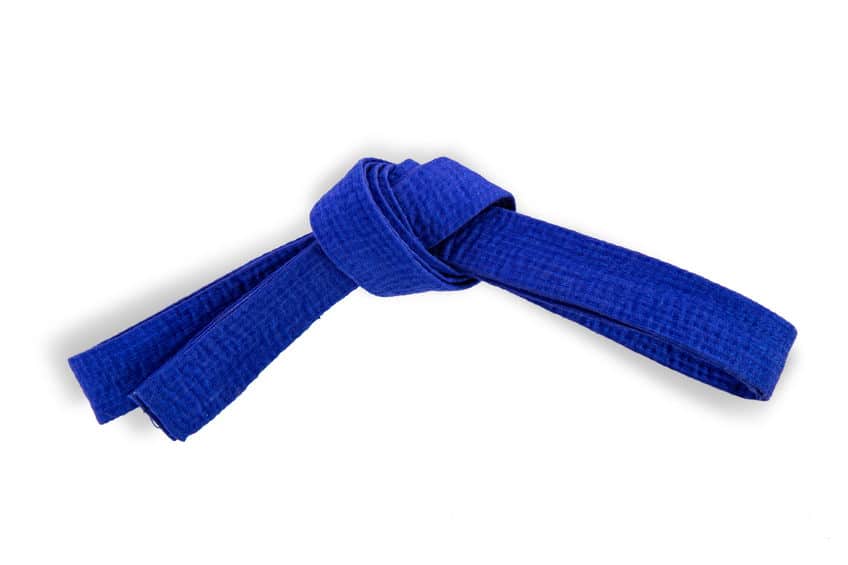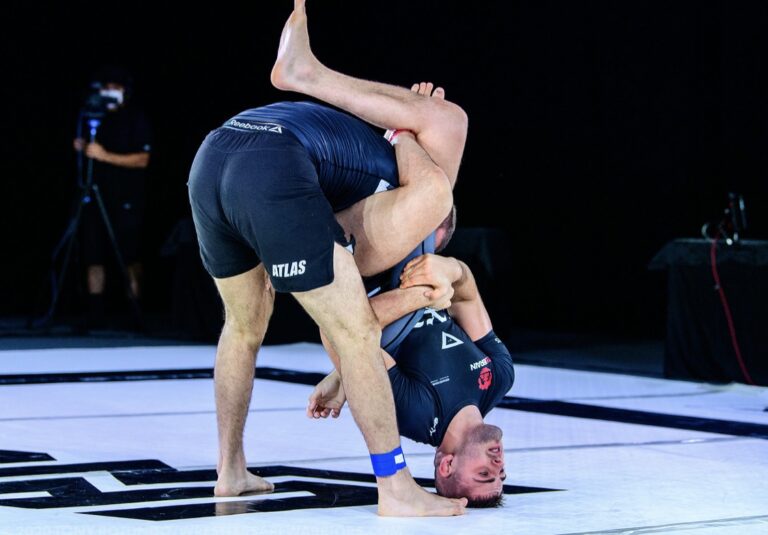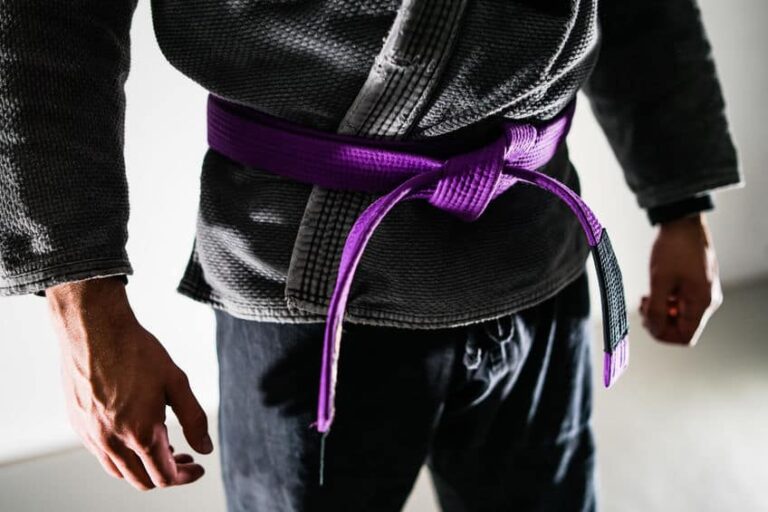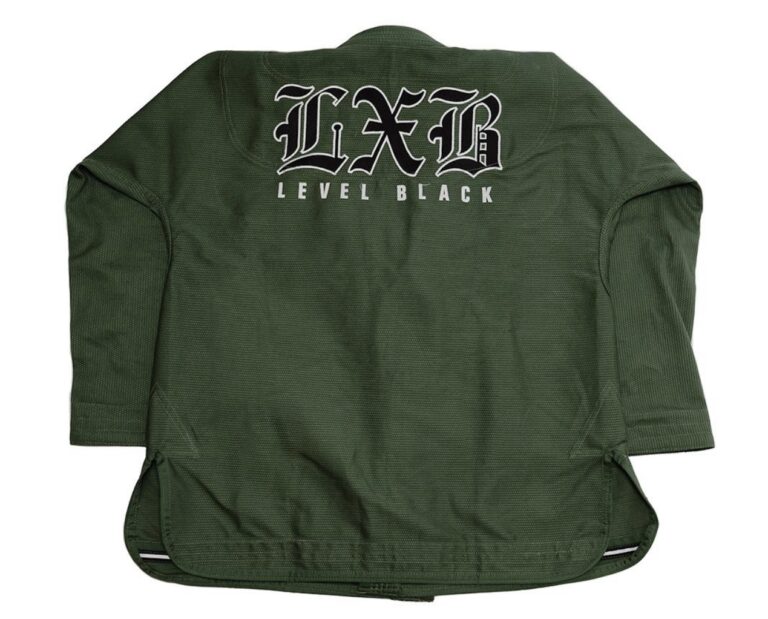How To Get Your Blue Belt Fast In BJJ | Blue Belt Requirements

One question I get asked often in class by new students is how do you get your blue belt fast? Well, to get your blue belt fast you need to understand the requirements to get your blue belt and have a fundamental understanding of BJJ.
The fastest you could become a blue belt is about 6 months though this is very rare. About 1-3 years is typically the amount of time it takes most people to get their blue belts in BJJ. That said, the more and the smarter you train the faster you can become a BJJ blue belt.
Perhaps you wish you could just skip the whole white belt phase and jump straight to the blue belt. After all, going from white belt to blue belt can be a frustrating process.
Blue Belt Requirements
I just want to say again that there are many variables to becoming a blue belt. For example, you may go to an academy where the professor is very strict about promoting belts. If so getting your blue belt fast will be harder.
On the other hand, your teacher might hand out belts simply because you came to a certain number of classes regardless of your skills. Either way, understand what your professor is looking for when they are promoting someone to blue belt.
Later on in this article, I will explain what I am looking for to see if a student is ready for their blue belt promotion. But what we are looking for at our academy might be a bit different than what your professor is looking for.
That said, the main goal should be to get better at BJJ and master the basics. The blue belt requirements are a guide to help you focus on what you should learn to get better.
Focus on getting better not just on getting to your blue belt. If you develop the necessary skills your blue belt will come.
How To Get Your Blue Belt Fast
If you were a wrestler all through high school and college, then you would probably jump to blue belt much faster than everyone else.
Or perhaps you have a background in judo and already know some excellent throws and basic submissions. Heck even starting in great shape can give someone a head start.
But I will assume that you have zero martial arts background and are starting from scratch. That said, I do not promise that following these tips will get you a blue belt in less than a year or anything like that.
They are simply some tips that might help you get to blue belt faster. In other words, these are the things I would advise my students to do if they were trying to get to blue belt as fast as possible.
Mat Time Is The Fastest Route To Blue Belt
There is nothing more important to getting to a blue belt fast than simply putting in the hours at your BJJ academy. After all, these tips are not about getting a blue-colored belt. They are about fast-tracking the process of learning the skills required to become a blue belt.
If you want to get a blue belt fast simply put the time in the gym and train as much as you can. After all, a person who goes to class 4 times per week puts in twice the training hours as someone who can only make it to class twice per week.
Of course, I understand that we all have different lives. If you are young and single with no kids then you might be able to go to class every day. On the other hand, you might run a business and have a wife and kids at home and can only train a few times per week.
But at the end of the day, if you can only train a few times per week then you likely will not be getting your blue belt very fast.
Just Train Jiu Jitsu As Much As You Can
There is nothing wrong with that of course. After all, except for a few people, BJJ will probably not put food on the table. So it makes sense if BJJ cannot be your number one priority.
But you do need to understand that putting in the hours is the fastest way to develop the skill to become a blue belt. If you cannot put in the time you probably will not become a blue belt very fast.
In that case, it is just something you will need to be ok with. Just keep showing up and you will get there. Persistence and consistency are the keys.
So if you really can only train a few times per week, try not to compare your progress with someone who can train every day. Of course, if you are crunched for time, don’t worry there is still something you can do to help speed up the process.
What You Need To Learn To Become a Blue Belt
Once you start training regularly ask your professor what requirements they are looking for before promoting their white belts to blue belts. Different professors might have different answers to this question.
Some might have a focus on self-defense and some might not care about self-defense at all. Though you should focus more on simply getting better, it is still good to know what they are looking for.
Ask them where you can improve as well as what they are looking for to promote a student to a blue belt. Some schools even have cheat sheets on what they will go over in the belt test.
As a white belt, it can be hard to know which skills you should be focusing on in the first place. So I does not hurt to simply ask your professor.
At the end of the day, they want to know that you have a base-level understanding of BJJ. Which of course is what you truly need to master to become a blue belt.
Positional Hierarchy In BJJ
First focus on understanding the basic positions in BJJ. Understand which positions are bad and which positions are best. Here is a list of positions from best to worst.
- Rear Mount
- Mount
- Knee On Belly
- Side Control Top
- Half Mount
- Guard Top and Guard Bottom
- Turtle Top And Bottom
- Half Guard Bottom
- Side Control Bottom
- Knee On Belly Bottom
- Mount Bottom
- Rear Mount Bottom
To become a blue belt fast you need to learn how to transition to the dominant positions at the top of the positional hierarchy. Maybe even more importantly than that, you need to learn the basic escapes from the positions that are low on the hierarchy.
You should also learn the basics of how to position your body and not make basic mistakes. You need to understand the basics of how to stand.
As well as focusing on learning the very most basic yet effective takedowns and sweeps.
Basic Blue Belt Requirments
- Master a handful of guard passes and half-guard passes
- 1-2 guard breaks
- 2-4 takedowns
- A few escapes from side control, knee on belly, mount, and back mount
- 2-3 submissions from side control, knee on belly, bottom guard, mount, and back mount
- 2-4 sweeps from guard and half-guard
- 4-6 Self-defense techniques
Don’t try and learn everything in the world if you want a quick promotion. Instead, focus on mastering a few basic things from each position.
You might need to learn more than this or less than this depending on your academy. This is not a complete list but is a good base on what you should focus on mastering first if you want to get to blue belt as fast as possible.
The BJJ Pyramid Method
Now that you know what to focus on learning, we need to talk about the BJJ pyramid method. Watch this video where I explain how to use the BJJ pyramid method to get good at BJJ fast!
Invest In Private Lessons
Though this might not be an option for everyone, investing in private lessons can certainly help you develop your skills at a faster pace.
During class, your teacher is trying to keep up with a large number of students. So understandably they do not have the time to give each student their undivided attention.
Your professor can help you focus on what you need to learn to get your blue belt. Private lessons are especially good if you cannot make it to class as often as you would like.
That said, even if you can train more often it is still a good idea to consider private lessons. Doing both will only help you become a blue belt faster.
Study BJJ At Home
You do not have to be in class to enhance your BJJ knowledge. Of course, training in class under a good teacher is superior to learning BJJ at home by yourself. But if you have free time to invest after class you can learn a lot online.
In today’s world, there are a ton of resources online to help you learn BJJ faster. This is why I have created a free program that includes instructionals and an online community.
It is the perfect free resource to help you become a blue belt as fast as possible. It is also great to simply watch BJJ competitions online. There are so many free fights online with the best competitors in the world.
Simply start watching some of the major BJJ competitions like you would any other sport. You will be surprised how much you will learn by simply watching the best in the world compete.
Compete In Tournaments
If you just started BJJ you might want to wait a little while before you start competing. That said, once you are ready there is no better place to test your skills than in real competition.
Talk to your professor about competing in your first tournament. If they think you are ready then it is a good test for you and your teacher to see how well you can do.
After all, it is your professor who will decide whether or not you get a blue belt in the first place.
Not only will you get a better idea of how you are doing, but this also gives your teacher a chance to know how you are doing as well. Winning or placing in a local tournament is a testament to your skills in BJJ.
Winning a competition at white belt is a good indication you might be ready for a belt promotion.
Forget About How Long It Takes To Get Your Blue Belt
The last tip I want to leave with you is this. Don’t worry about how long it will take you to become a blue belt in BJJ.
Instead, enjoy the process at all stages of your BJJ journey. Just use these tips to improve your jiu-jitsu as much as you can.
Worry more about improving every day rather than what color belt you have. It will go by faster if you do and before you know it you will earn your BJJ blue belt.





